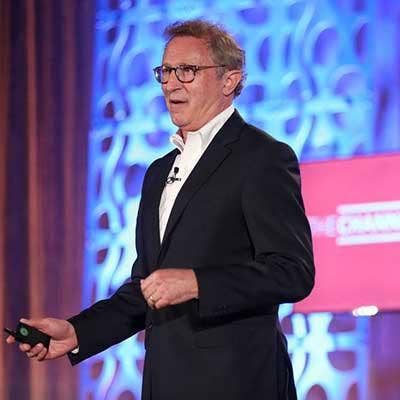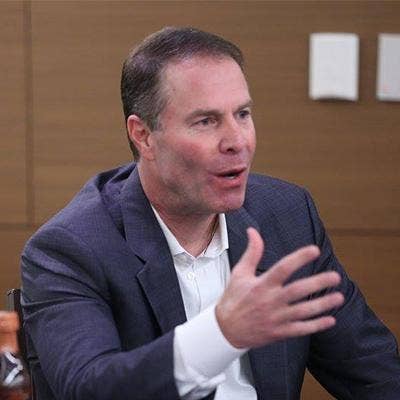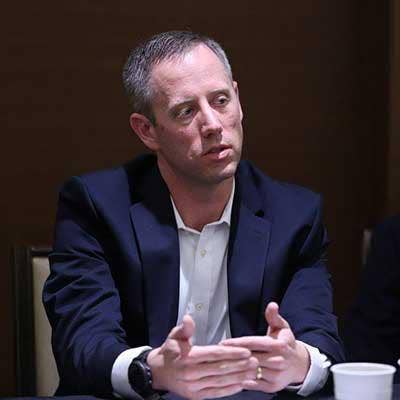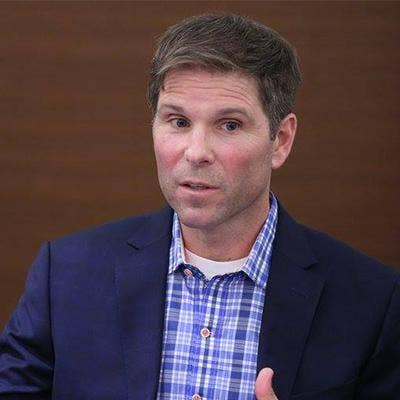Channel Chiefs: Building A Better Relationship Via Partner Rules Of Engagement

Partner Rules Of Engagement: Carrots, Sticks, And Whatever Else It Takes
Even in the most channel-friendly vendors, channel conflict is bound to happen. "Channel conflict" here does not mean solution providers competing against their peers. That's expected. Instead, many solution providers' top concern is that their vendor partners stay out of the competition with a direct sales effort.
Storage vendors are not deaf to the potential problem of channel conflict. Indeed, they have taken the lead over the past few years to implement rules of engagement to stop channel conflict. There is no one single answer to the question of how to prevent it, but partner rules of engagement go a long way to minimizing potential conflicts.
This look at partner rules of engagement is the latest in a series based on a roundtable session featuring CRN and the channel chiefs at five top storage vendors. Biographies of the participants can be found in part one of the series.
In this segment, NetApp's Bill Lipsin, EMC's Gregg Ambulos, Pure Storage's Michael Sotnick, and Hewlett Packard Enterprise's Jeremiah Jenson talk about how their companies use rules of engagement as a way to encourage pro-channel behaviors by both their own sales reps and their partners.

How do storage vendors use rules of engagement to influence partners' behavior?
NetApp's Lipsin: I’ve tried this with another company, where everyone said, 'Yes, we need rules of engagement because we’re finding that sales services and partners are conflicting unnecessarily.' Last time I tried it, I couldn’t get the management systems and buy-in the way I’ve got it [at NetApp. Our] new CEO has said, 'I’m looking at everything I have to do. I need that channel, and that entire partner ecosystem, to be more effective.'
We put it right into our code of conduct. There are consequences for employees doing things that are against the channel unnecessarily. We’ve got a whole policy written. We’ve got education, and we have communication coming as well. That’s caused as much internal conversation as it has external, which I think is healthy. ... You have to change not just your programs, not just your technology, not just your processes, but actually how people work and think with the partner ecosystem.

EMC's Ambulos: Look at our portfolio. It’s so broad. It’s a huge opportunity for partners because we have a specialty organization that works with partners, but we can’t address all the opportunities all at once. It’s a big opportunity for partners, but you’ve got to have rules of engagement.
In our midmarket business, we don’t do services. If the partner builds out the service capabilities, they sell it. They deliver it. If they don’t deliver it, we’ll do it, but no one gets paid for it within EMC. It doesn’t go to a sales rep. It doesn’t go to a services person. It goes to a house account. We’re encouraging our partners to build out their capabilities so they can deliver on what they sell. …
You’ve got to have the rules. You’ve got to have the fundamentals in place. You’ve got to have sales aligned with the partner community. Otherwise, you’re going to struggle.

NetApp's Lipsin: It’s not just about fixing problems. It’s defining future behavior as well.

HPE's Jenson: We have a very strong co-selling model. It’s not just a channel motion. This is an initiative that is companywide, and driven from Meg Whitman, our CEO, all the way down. We’re incredibly sincere about not only our channel being a channel, a core, and part and parcel to who we are, but part and parcel to how we built the company.
In this last year, in the Americas specifically, we made the strongest statement we’ve ever made, and one of the strongest statements in the industry, that everything from the commercial-two layer on down, we’ll go through a channel partner. In fact, we went so far as to say if the business goes direct, we’re not paying the sales rep on that opportunity. That business will go through channel partners, and that has been incredibly successful.

EMC's Ambulos: It’s worked for us for the last six, seven years.

HPE's Jenson: It’s been an incredibly successful program [for us]. Frankly, it’s helped drive net new partners and interest in our partner programs. It’s helping our business grow even faster, getting to new customers. That’s really what that’s driving.

Pure Storage's Sotnick: When you start from scratch, you really get some unique opportunities. I think that’s the unique role that I’ve got here. We’ve built it 100 percent channel. The ability for us to engage our partners and [have them] sit shoulder-to-shoulder with us at our sales kickoff, not only in the keynotes and general session, but in every breakout, is super powerful and very uplifting for them and really gets them thinking. Here they are spending a week out of the territory, out of their business, investing it in us, and the depth to which we get account planning, territory planning, go-to-market motion, together is exceptional.
We’ve taken a page out of Uber’s book, so after every transaction done in Pure, which is done with a partner globally, we know who the sales person is at the partner based on our records and detail. That individual account executive within the partner receives a letter and a survey.

How does that survey work?
Pure Storage's Sotnick: The first question is, 'How would you rate the experience of selling Pure?' The second question is, 'How would you rate the experience of working with the Pure AE and SE?' Being very transparent with our partners and using that as a vehicle to get feedback, like, 'How are we doing?' Getting some good info back. I think having them in our kickoff, getting the real-time survey after every transaction, really keeping our finger on the pulse and approaching it that way, and also watching our teams’ behavior precludes us from things like rules of engagement, or some of the other things that I think are fixing areas of existing conflict.